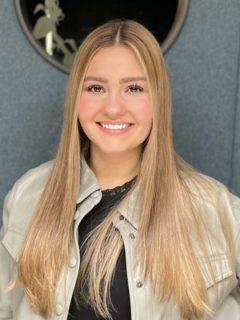Jana Schulik
Jana Schulik
Former Master student
Comparison and investigation of the mechanical properties of 3D-printed bioinks for the cultivation of human umbilical vein endothelial cells
Supervisors: Dr. Annika Kengelbach-Weigand (University Hospital Erlangen), Prof. Aldo R. Boccaccini
In the search for new suitable biomaterials for vascular tissue engineering, this study in cooperation with the University Hospital Erlangen will compare different bioink types with regard to cell survival, proliferation and sprouting of human umbilical vein endothelial cells. Furthermore, 3D-printed scaffolds using the different the bioinks will be characterized in terms of their mechanical properties such as behavior under stress and strain. The bioink under investigation is the alginate/hyaluronic acid/gelatin biotin established at the University Hospital Erlangen [1], the pre-crosslinked alginate-dialdehyde crosslinked with gelatin (ADA-GEL) developed at the FAU Institute of Biomaterials [2], and gelatin-methacryloyl bioink (GelMA) [3, 4]. For the alginate/hyaluronic acid/gelatin bioink, a high cell survival rate was shown for melanoma cells and stem cells, as well as successful cultivation and cell differentiation in vitro [1]. The ADA-GEL used was developed according to an improved method at the FAU Institute of Biomaterials and is suitable for soft tissue engineering applications due to its excellent properties such as biocompatibility and biodegradability [2]. For the GelMA hydrogel, the formation of connective tissue as well as vascularization has already been successfully demonstrated in the arteriovenous loop model at the University Hospital Erlangen [4].
[1] R. Schmid, S. K. Schmidt, R. Detsch, H. Horder, T. Blunk, S. Schrüfer, D. W. Schubert, L. Fischer, I. Thievessen, S. Heltmann-Meyer, D. Steiner, D. Schneidereit, O. Friedrich, A. Grüneboom, H. Amouei, H. Wajant, R. E. Horch, A. K. Bosserhoff, A. Arkudas, A. Kengelbach-Weigand, A New Printable Alginate/Hyaluronic Acid/Gelatin Hydrogel Suitable for Biofabrication of In Vitro and In Vivo Metastatic Melanoma Models, Adv. Funct. Mater. 2022, 32, 2107993, DOI: 10.1002/adfm.202107993
[2] J. Hazur, R. Detsch, E. Karakaya, J. Kaschta, J. Teßmar, D. Schneidereit, O. Friedrich, D. W. Schubert, A. R. Boccaccini, Improving alginate printability for biofabrication: establishment of a universal and homogeneous pre-crosslinking technique, Biofabrication 12 (2020), 045004, DOI: 10.1088/1758-5090/ab98e5
[3] D. Loessner, C. Meinert, E. Kaemmerer, L. C. Martine, K. Yue, P. A. Levett, T. J. Klein, F. P. W. Melchels, A. Khademhosseini, D. W. Hutmacher, Functionalization, preparation and use of cell-laden gelatin methacryloyl–based hydrogels as modular tissue culture platforms, Nat. Protoc. 11 (2016) 727–46
[4] S. Heltmann-Meyer, D. Steiner, C. Müller, D. Schneidereit, O. Friedrich, S. Salehi, F. B. Engel, A. Arkudas, R. E Horch, Gelatin methacryloyl is a slow degrading material allowing vascularization and long-term use in vivo, Biomed. Mater. 16 (2021) 065004, DOI: 10.1088/1748-605X/ac1e9d

